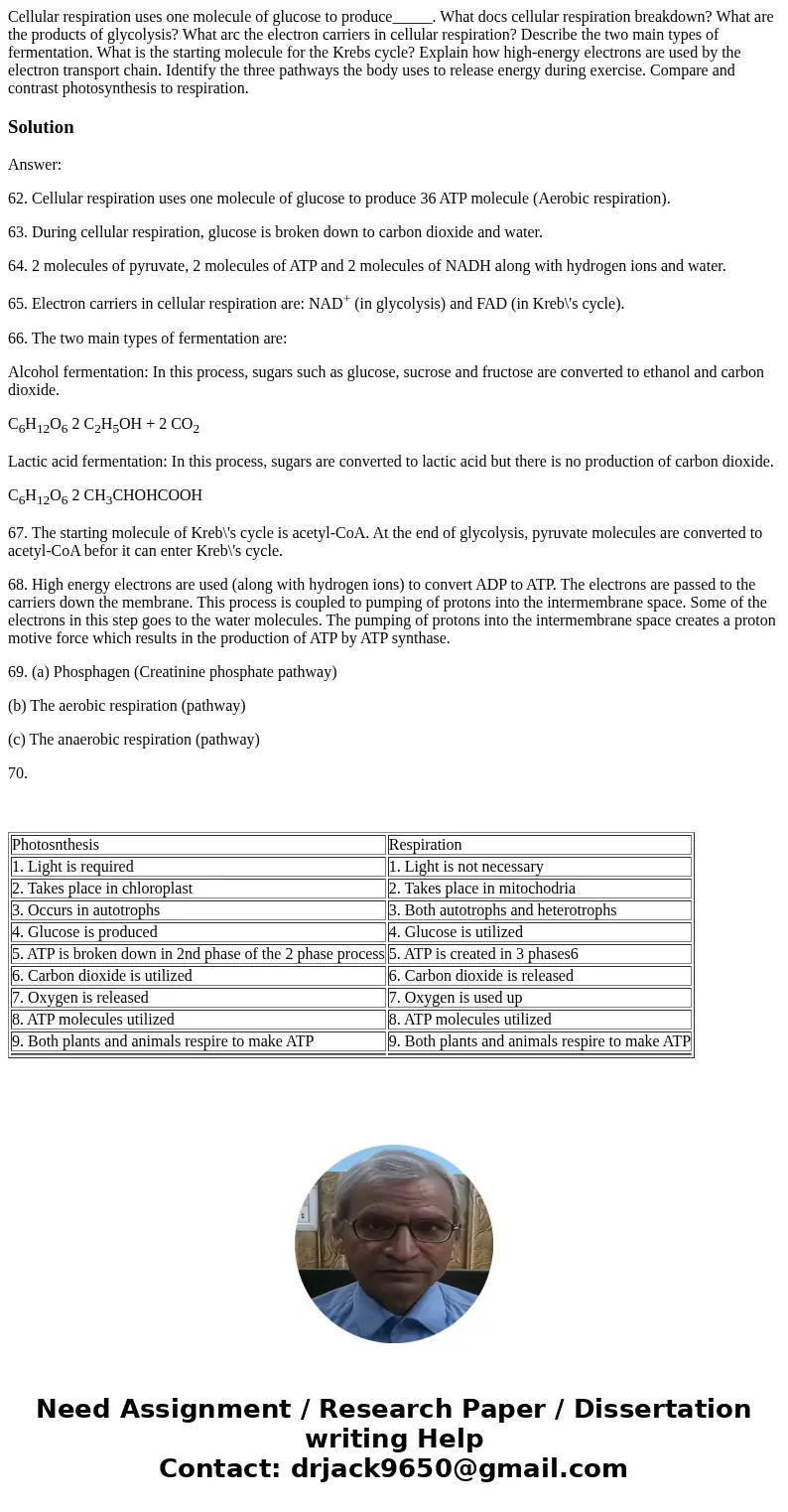Cellular respiration uses one molecule of glucose to produce
Solution
Answer:
62. Cellular respiration uses one molecule of glucose to produce 36 ATP molecule (Aerobic respiration).
63. During cellular respiration, glucose is broken down to carbon dioxide and water.
64. 2 molecules of pyruvate, 2 molecules of ATP and 2 molecules of NADH along with hydrogen ions and water.
65. Electron carriers in cellular respiration are: NAD+ (in glycolysis) and FAD (in Kreb\'s cycle).
66. The two main types of fermentation are:
Alcohol fermentation: In this process, sugars such as glucose, sucrose and fructose are converted to ethanol and carbon dioxide.
C6H12O6 2 C2H5OH + 2 CO2
Lactic acid fermentation: In this process, sugars are converted to lactic acid but there is no production of carbon dioxide.
C6H12O6 2 CH3CHOHCOOH
67. The starting molecule of Kreb\'s cycle is acetyl-CoA. At the end of glycolysis, pyruvate molecules are converted to acetyl-CoA befor it can enter Kreb\'s cycle.
68. High energy electrons are used (along with hydrogen ions) to convert ADP to ATP. The electrons are passed to the carriers down the membrane. This process is coupled to pumping of protons into the intermembrane space. Some of the electrons in this step goes to the water molecules. The pumping of protons into the intermembrane space creates a proton motive force which results in the production of ATP by ATP synthase.
69. (a) Phosphagen (Creatinine phosphate pathway)
(b) The aerobic respiration (pathway)
(c) The anaerobic respiration (pathway)
70.
| Photosnthesis | Respiration |
| 1. Light is required | 1. Light is not necessary |
| 2. Takes place in chloroplast | 2. Takes place in mitochodria |
| 3. Occurs in autotrophs | 3. Both autotrophs and heterotrophs |
| 4. Glucose is produced | 4. Glucose is utilized |
| 5. ATP is broken down in 2nd phase of the 2 phase process | 5. ATP is created in 3 phases6 |
| 6. Carbon dioxide is utilized | 6. Carbon dioxide is released |
| 7. Oxygen is released | 7. Oxygen is used up |
| 8. ATP molecules utilized | 8. ATP molecules utilized |
| 9. Both plants and animals respire to make ATP | 9. Both plants and animals respire to make ATP |

 Homework Sourse
Homework Sourse